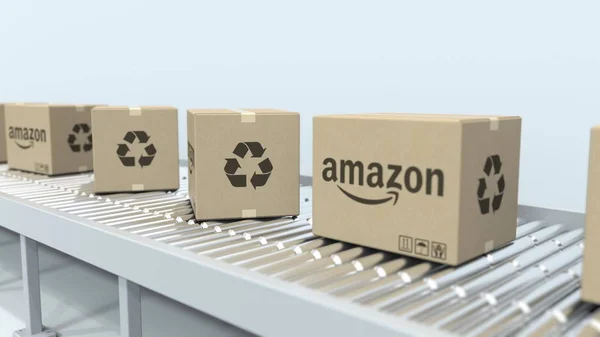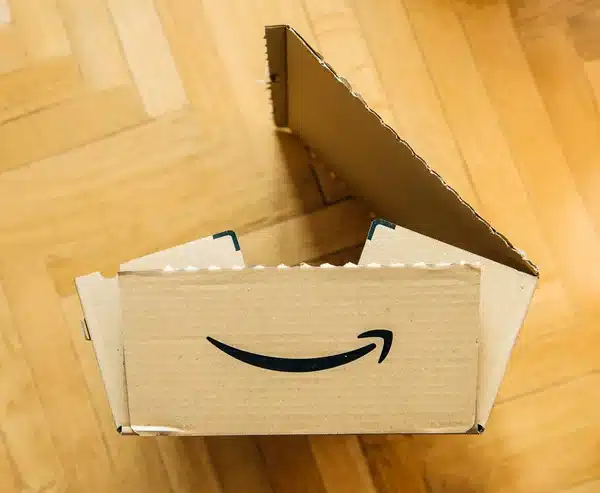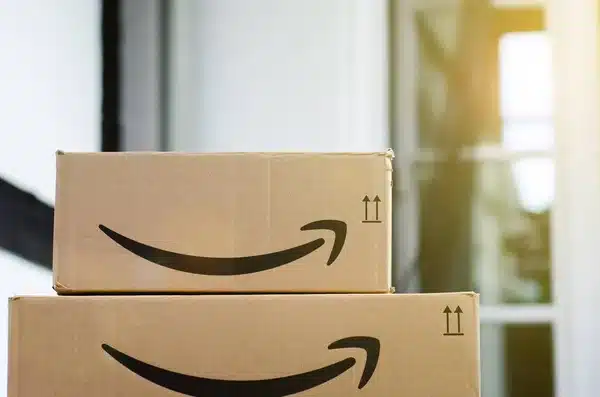Selling on Amazon FBA (Fulfillment by Amazon) can be a lucrative business venture, but it’s essential to adhere to Amazon’s strict warehouse requirements for packaging, box size, and pallet standards. These requirements ensure efficient handling, storage, and distribution of products while minimizing the risk of damage during transit. Failing to comply with Amazon’s packaging guidelines can result in delays, additional fees, or even rejection of your inventory.
In this comprehensive guide, we will cover Amazon FBA requirements for outer box size, pallet standards, weight limits, and best practices for packaging. Whether you are an established seller or just getting started, understanding these requirements will help you streamline your supply chain and avoid potential pitfalls in the Amazon FBA process.

Outer Box Size Requirements
Amazon has specific requirements for the outer box sizes that sellers must adhere to when shipping products to their FBA warehouses. These requirements are designed to facilitate the smooth handling and storage of goods within Amazon’s distribution centers.
1. Maximum Dimensions and Weight
Maximum Box Dimensions: The maximum size for any box sent to an Amazon FBA warehouse is 25 inches on any side. If the box exceeds this size, it must be able to be handled safely by warehouse personnel or may be subject to additional charges.
Weight Limits: The maximum weight for a single box should not exceed 50 lbs unless it contains a single oversized item. Boxes containing jewelry or watches should weigh no more than 40 lbs. Exceeding these limits can lead to rejection or additional fees for non-compliance.
2. Overweight Box Labeling
If a box weighs more than 50 lbs, it must be labeled as “Team Lift” to alert warehouse staff that the box requires additional handling support. Proper labeling helps Amazon employees manage packages safely and efficiently, reducing the risk of injury or damage.
3. Box Strength
Box Durability: Ensure all boxes use strong, durable materials with a bursting strength of at least 200 pounds per square inch (PSI). For heavier items, consider double-walled boxes to enhance protection.
Avoiding Voids: Pack boxes tightly to eliminate empty spaces, which can cause damage during transit. Secure items within the box using packing materials like bubble wrap, air pillows, or foam peanuts.
4. Additional Box Requirements
Sealing: Boxes must be securely sealed with strong packing tape. Amazon recommends using tape that is at least two inches wide and applying it across all box seams. Proper sealing helps prevent the box from opening during transit.
Standard Label Placement: All boxes must have shipping labels with the Amazon Shipment ID and FBA Box Content Information placed on the top. Labels should be easy to read and scannable, without any creases or damage.

Pallet Requirements for Amazon FBA
If you are shipping a larger quantity of goods to Amazon’s fulfillment centers, you may need to ship your inventory on pallets. Amazon has specific pallet standards that must be followed to ensure safe and efficient storage.
1. Pallet Type
Standard Pallet Size: Amazon requires the use of standard 40 x 48 inch GMA pallets. The pallets must be in good condition, with no broken boards, exposed nails, or other damage that could compromise their integrity.
Four-Way Access: Pallets must have four-way access, which means that forklifts and pallet jacks can lift the pallet from all four sides. This is essential for efficient handling within Amazon warehouses.
2. Stacking and Height Requirements
Maximum Pallet Height: The maximum height for a fully loaded pallet, including the pallet itself, is 72 inches. This height limit is crucial to ensure that the pallet can be stored properly without the risk of toppling.
Weight Limit: The maximum weight for a loaded pallet should not exceed 1,500 lbs. Pallets that exceed this weight may be rejected or incur additional handling fees.
3. Wrapping and Labeling
Wrapping: All pallets must be securely wrapped with shrink wrap to prevent items from shifting during transit. The shrink wrap should extend at least three inches over the top layer to ensure that the contents remain stable.
Label Placement: Each pallet must have an Amazon Shipment ID label placed on all four sides for easy identification. The labels should be printed clearly and placed in a visible location.
4. Pallet Condition Requirements
Quality and Condition: Pallets must be of good quality, with no broken or missing boards, and must be free of pests and debris. Using damaged pallets can result in delays and fines.
No Overhang: Items placed on pallets must not hang over the edges. Overhanging items can cause instability during transit and increase the risk of damage.
Packaging Guidelines for Amazon FBA
Adhering to Amazon’s packaging guidelines is essential for a smooth FBA experience. Proper packaging helps protect your products, reduces the risk of damage during shipping, and ensures that Amazon can store and fulfill orders efficiently.
1. Sealing Boxes
Sealing Tape: Boxes must be sealed with strong packing tape along all seams to prevent them from opening during transit. Amazon recommends using at least two inches wide packing tape to ensure a secure seal.
Reinforcement: For heavier boxes, use additional tape along the corners and seams for added reinforcement.
2. Box Content Protection
Padding: Pad fragile items well to prevent movement and damage during shipping. Use bubble wrap, foam, or air pillows to protect products within the box.
Poly Bags: Items that are not suitable for loose packaging, such as clothing, should be placed in poly bags. Poly bags must be at least 1.5 mil thick and should have a suffocation warning if the opening is larger than five inches.
3. Labeling Requirements
FNSKU Label: Every product unit must have an FNSKU (Fulfillment Network Stock Keeping Unit) label. This label helps Amazon identify the product during storage, fulfillment, and customer returns.
Scannable Barcodes: The FNSKU barcode must be easily scannable and free from damage or smudges. Labels should not be placed over box seams or corners, as this can make them difficult to scan.
4. Fragile Items and Special Handling
Fragile Products: Fragile products should be individually wrapped with adequate padding, such as bubble wrap or foam. Ensure that fragile items are not in contact with each other within the box to avoid breakage.
Hazardous Materials: Products classified as hazardous (e.g., batteries, chemicals) must comply with Amazon’s hazardous materials guidelines, including proper labeling and packaging.
5. Liquid Products
Leak-Proof Packaging: Use leak-proof packaging for liquid products to prevent spills that might damage other items in the shipment. Seal containers tightly, and place items in a poly bag or shrink-wrap them for added protection.
Absorbent Material: For liquid products, use absorbent materials such as paper or foam to help contain leaks in case of breakage.
Best Practices for Amazon FBA Compliance
Following Amazon’s guidelines for box sizes, pallet standards, and packaging is essential to prevent potential issues that could delay your inventory’s acceptance or increase costs. Below are some best practices to ensure your shipment complies with Amazon FBA requirements.
1. Use Quality Packaging Materials
Using high-quality boxes, pallets, and packing materials is critical to prevent damage during transit and ensure that Amazon accepts your shipment without issues. Avoid using reused boxes, as they may not meet Amazon’s strength requirements.
2. Optimize Packaging for Cost Efficiency
Properly optimizing your packaging can help you reduce shipping costs. For example, reducing excess void space and using appropriately sized boxes can help you minimize dimensional weight, which is a key factor in air and sea shipping costs.
Tonlexing can help you optimize your packaging to meet Amazon’s requirements while keeping shipping costs low. Our experienced team can provide guidance on how to package your goods efficiently, helping you save money while ensuring compliance.
3. Accurate Labeling
Proper labeling is essential to ensure Amazon can easily process and store your inventory. Make sure that every box and pallet is labeled correctly, and that labels are scannable. Incorrect or missing labels can lead to delays, additional fees, or even rejection of your shipment.
4. Work with a Reliable Freight Forwarder
Shipping to Amazon’s fulfillment centers can be complex, especially if you are shipping in bulk or internationally. Working with an experienced freight forwarder like Tonlexing can simplify the process, ensure your shipment meets Amazon’s requirements, and help you avoid costly mistakes.
Tonlexing offers tailored logistics solutions for Amazon FBA sellers, including packaging support, pallet preparation, and compliance assistance. With our end-to-end services, you can focus on growing your business while we handle the logistics.
5. Inspecting Goods Before Shipment
Conducting a quality inspection before shipping your inventory to Amazon is a best practice that can save you time and money. Ensuring that all products meet quality standards, are properly labeled, and comply with Amazon’s requirements will prevent problems at the warehouse and reduce the risk of returns or negative reviews.
6. Inventory Management
Managing inventory effectively is crucial for FBA success. Keeping track of your stock levels, monitoring sales velocity, and planning your shipments can help you avoid stockouts or overstocking, both of which can negatively impact your Amazon seller rating and profitability.
7. Seasonal Shipping and Planning
During peak seasons, such as holidays and major shopping events like Black Friday, Cyber Monday, and Prime Day, Amazon warehouses experience higher volumes of inbound shipments. Planning ahead and preparing your shipments early can help you avoid delays, minimize storage costs, and ensure that your inventory is stocked in time to meet increased consumer demand.
Forecast Demand Accurately: Analyze past sales data to forecast demand accurately for peak seasons. This will help you determine how much inventory to send to Amazon FBA to avoid stockouts or overstocking.
Prepare Early: Ensure your shipments are prepared and sent well before peak times to avoid the rush. Carriers tend to be busier during the holiday season, which could lead to longer transit times.
Communicate with Suppliers: Collaborate with your suppliers to align production schedules with your inventory needs for peak seasons. Advanced planning can help reduce lead times and keep your supply chain smooth.
Book Freight Early: During peak seasons, carriers experience higher volumes and may charge higher rates. Booking your freight early can help you secure better rates and avoid unexpected costs.
Warehouse Preparation: Make sure your packaging, labeling, and palletizing are all compliant with Amazon’s requirements before the shipment leaves your warehouse. This will prevent any last-minute issues that could delay your shipment’s acceptance.
Proper seasonal planning helps to avoid costly delays, missed sales opportunities, and additional fees related to expedited shipping or storage.

Common Issues and How to Avoid Them
1. Overweight or Oversized Boxes
Shipping boxes that exceed Amazon’s weight or size limits can lead to additional fees, delays, or rejection of your shipment. To avoid this, always double-check the weight and dimensions of your boxes before shipment. If your products are heavy, consider splitting them into smaller boxes to keep each box under Amazon’s limits.
2. Incorrect Labeling
Incorrect labeling often causes delays or rejections at Amazon’s fulfillment centers. Label every box and pallet accurately, ensuring the labels are scannable and free from damage. Use a quality printer to create clear, durable labels, and place them on the correct parts of the box or pallet.
3. Poor Packaging
Using weak or damaged packaging materials can lead to product damage during transit. Always use high-quality packaging materials and reinforce heavy boxes to avoid damage. Fragile items should be individually wrapped and cushioned to prevent movement inside the box.
4. Non-Compliance with Pallet Requirements
Non-compliance with pallet requirements, such as using pallets that are not the correct size or in poor condition, can lead to delays and fines. Make sure that all pallets are 40 x 48 inch GMA pallets and are in good condition, with no broken boards or exposed nails.
5. Ignoring Seasonal Peaks
Not planning for seasonal peaks can result in delayed shipments and stockouts, which can negatively impact your sales and seller rating. Always plan ahead for busy periods, ensuring that inventory is sent to Amazon well in advance to avoid delays.
How Tonlexing Can Help You
Tonlexing is a leading freight forwarding service provider specializing in shipping to Amazon fulfillment centers. With years of experience handling international logistics, our team can provide you with:
Comprehensive Sea and Air Freight Services: Whether you choose sea freight or air freight, Tonlexing can help you find the best rates and ensure a seamless shipping experience.
Customs Clearance Support: Our customs brokerage services clear your goods quickly while ensuring full compliance with all regulations.
Real-Time Tracking: We provide real-time tracking for your shipments, keeping you updated on their progress from departure to arrival.
Packaging and Labeling Assistance: Tonlexing can help you package and label your products to meet Amazon FBA requirements, reducing the risk of delays or rejections.
Pallet Preparation: Our team prepares all pallets according to Amazon’s specifications, including wrapping and labeling.
Inventory Planning and Management: We assist in planning your inventory shipments, especially during peak seasons, to help you meet demand without incurring unnecessary costs.
With Tonlexing by your side, you can focus on expanding your Amazon business while we handle the complexities of logistics, packaging, and compliance.
Conclusion
Understanding and adhering to Amazon FBA warehouse requirements for outer box size, pallet standards, and packaging is essential to ensure your products are accepted without delays or additional fees. By following these guidelines and best practices, you can streamline the shipping process, reduce the risk of damage, and avoid potential compliance issues.
Tonlexing is here to assist you with all your Amazon FBA shipping needs, from packaging to pallet preparation and compliance management. Contact us today to learn more about how we can help you meet Amazon’s requirements and ensure a smooth and efficient shipping experience.


